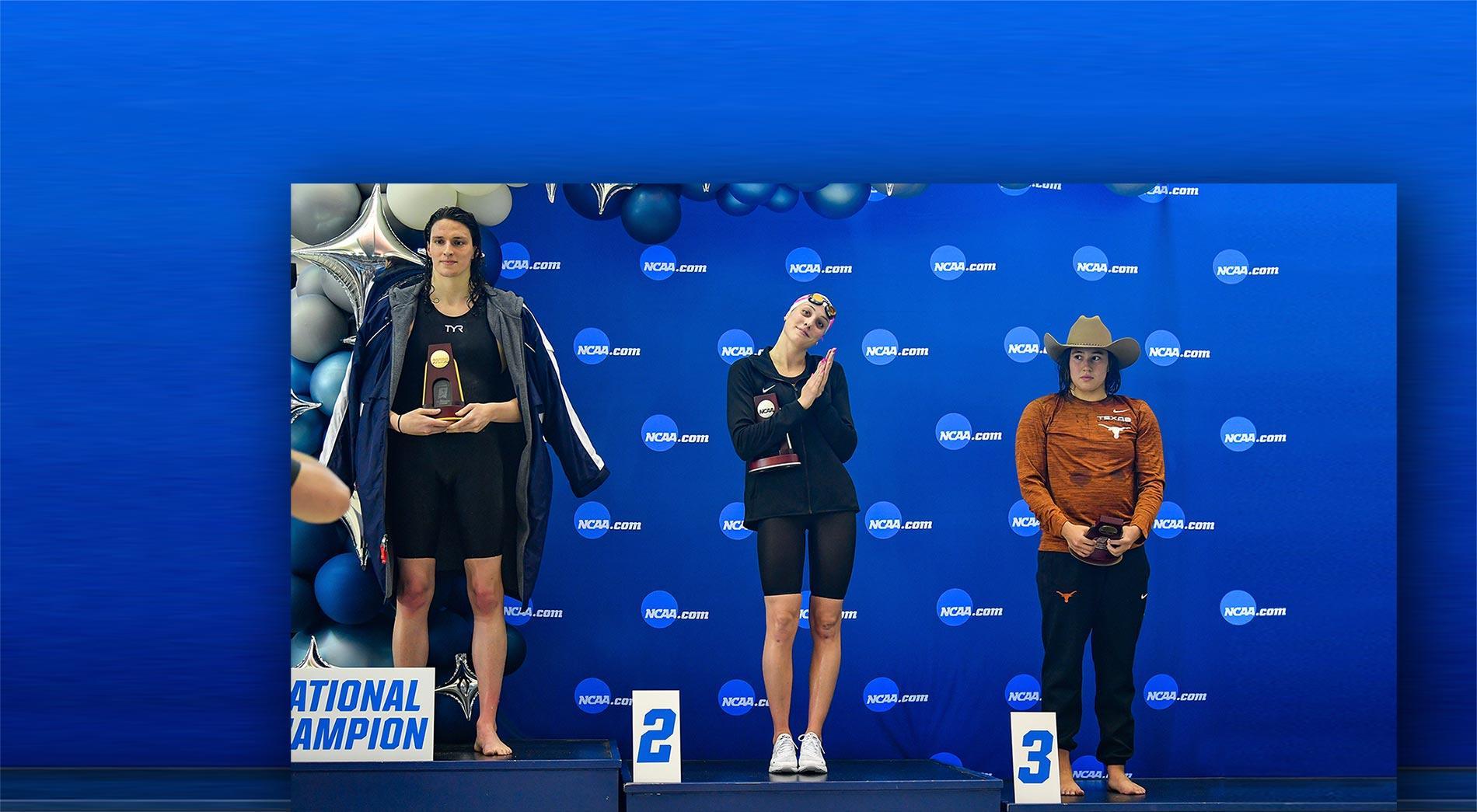FINA’s new policy on who can compete in women’s sports will effectively bar transgender athletes such as Lia Thomas and CeCe Telfer from competing against biological women. If sports organizations do not step in to protect women sports soon, the demise of women’s sports is assured.
Diana Mautner Markhof
1 August 2022
Arabic version | Chinese version | Russian version | Spanish version
FINA, the world governing body for swimming, has voted to effectively ban transgender athletes from participating in women’s elite swimming competitions. The ban took effect on 20 June 2022 and was approved with a 71.5% majority at the FINA Extraordinary General Congress 2022 held in Budapest. FINA President Husain Al-Musallam stated: “We have to protect the rights of our athletes to compete, but we also have to protect competitive fairness at our events, especially the women’s category at FINA competitions.”
There is a reason why women and men do not compete against each other in most sports – equestrian sports being one of the few exceptions. Men are stronger, faster and have more endurance. The best female athlete will never beat an average elite male athlete. This has been proven over and over again.
Who is Lia Thomas? Born a man in 1999 as Will Thomas, Thomas transitioned to ‘womanhood’ in 2019 with gender surgery. As a transgender athlete, she won the US National Collegiate Athletic Association (NCAA) Women’s 500-yard freestyle swimming championship in March 2022 by competing against biological women.
The University of Pennsylvania nominated Thomas for the 2022 NCAA Woman of the Year award. On 26 July, the NCAA announced its conference selections for 2022 Woman of the Year. A biological woman, Columbia University fencer Sylvie Binder was selected as the Ivy League pick, over national champion and University of Pennsylvania transgender swimmer Lia Thomas. Despite the policy decision by FINA, Thomas still hopes to swim for the United States in the upcoming 2024 Olympics in Paris.
The case of Lia Thomas has many asking what it means to be a woman? Is taking hormone pills and getting surgery all it takes? As the pro and contra fronts harden, those in support of transgender athletes insist that there is no difference between biological women and those who have turned ‘female’.
But clearly, allowing transgender athletes to compete against biological women could be the end of women’s sports. Why are not more voices heard supporting women’s rights? Where is the outcry against the ‘wokification’ of sports and what this means for every female athlete, whether elite or not?
An average man has more muscle mass than the average woman. An average male athlete also has much more muscle mass than a trained female athlete. Women athletes are less strong and powerful than equally trained men. A recent 2022 study by researchers at the University of Bologna (https://www.ncbi.nlm.nih.gov/pmc/articles/PMC7930971/) concluded that there are “significant differences in strength and power relative to body mass, lean body mass, and muscle thickness” between male and female strength and power athletes. On average there exists a 10 to 12% performance gap between elite male athletes and elite female athletes.
Lia, formerly Will, Thomas went through puberty as a man. Before swimming for the women’s team at the University of Pennsylvania, she swam as a man for the University of Pennsylvania (Penn) for three seasons and never won any championships as a man. After a gap year in which she transitioned, she returned to swim on the women’s team. According to Thomas, she “transitioned to be happy, to be true to myself”. Some have accused her of switching sexes in order to become a successful athlete. Women swimming against her have voiced how unfair the playing field has become.
In early February 2022, sixteen members of her own women’s swimming team at Penn wrote an anonymous letter to Ivy League officials requesting that Thomas not be allowed to compete at the conference championship meet. According to the Washington Post, the letter stated: “We fully support Lia Thomas in her decision to affirm her gender identity and to transition from a man to a woman. Lia has every right to live her life authentically. However, we also recognize that when it comes to sports competition, that the biology of sex is a separate issue from someone’s gender identity. Biologically, Lia holds an unfair advantage over competition in the women’s category, as evidenced by her rankings that have bounced from #462 as a male to #1 as a female. If she were to be eligible to compete against us, she could now break Penn, Ivy, and NCAA Women’s Swimming records; feats she could never have done as a male athlete.” The request was rejected and Thomas was allowed to compete and win the NCAA championship.
Biological women (those born as women) develop ovaries in the absence of testosterone production. The activation of estrogen pathways promotes the development of so-called secondary sex characteristics during puberty. Males are generally taller, have longer bones, narrower hips and wider shoulders and lower body fat. Men have higher muscle mass and this muscle mass is distributed differently throughout their bodies. Men have larger hearts and lungs and have a higher level of hemoglobin, the protein that carries oxygen within the blood. Thomas went through puberty as a man and her ‘womanhood’ is just a couple of years old (less than two to be exact). If Thomas is allowed to represent a ‘woman’ at the Olympics, this will be the end of elite women competitive sports.
In 2021 transgender runner CeCe Telfer was not allowed to compete in the women’s 400m hurdles at US Olympic trials. She did not meet the eligibility conditions for women’s events set out by World Athletics (the international governing body for track and field sports) . Similar to Thomas, Telfer had competed for the men’s team at Division II Franklin Pierce, took time off to transition and came back to compete for the women’s team. She won the NCAA title in 2019.
The discussion about Lia Thomas should not be about Thomas, but should focus on all the ‘other’ biological women who have now been put in impossible positions. Allowing transgender athletes to compete with biological women is killing women’s sports. If something is not done to level the playing field, no biological women will stand a chance.
Going further than the ban against CeCe Telfer, under the FINA policy transgender women must show that “they have not experienced any part of male puberty beyond Tanner Stage 2 or before age 12, whichever is later”. This policy effectively eliminates their eligibility to compete in the women’s category. Tanner Stages describe the physical changes people undergo during puberty. This policy is fair to women born as women and sets eligibility criteria aimed at eliminating the “performance gap” that appears between males and females during puberty.
“Without eligibility standards based on biological sex or sex-linked traits, we are very unlikely to see biological females in finals, on podiums, or in championship positions; and in sports and events involving collisions and projectiles, biological female athletes would be at greater risk of injury,” the FINA policy reads. The policy was written together with athletic, scientific and legal experts.
Such policies are needed not only at the highest levels, but also at the high school and university levels. Women should be allowed to compete fairly, gain scholarships and advance to the highest levels in their sport. Otherwise, the demise of women’s sports is imminent—and transgender athletes such as Lia Thomas will be on the forefront of this demise.







